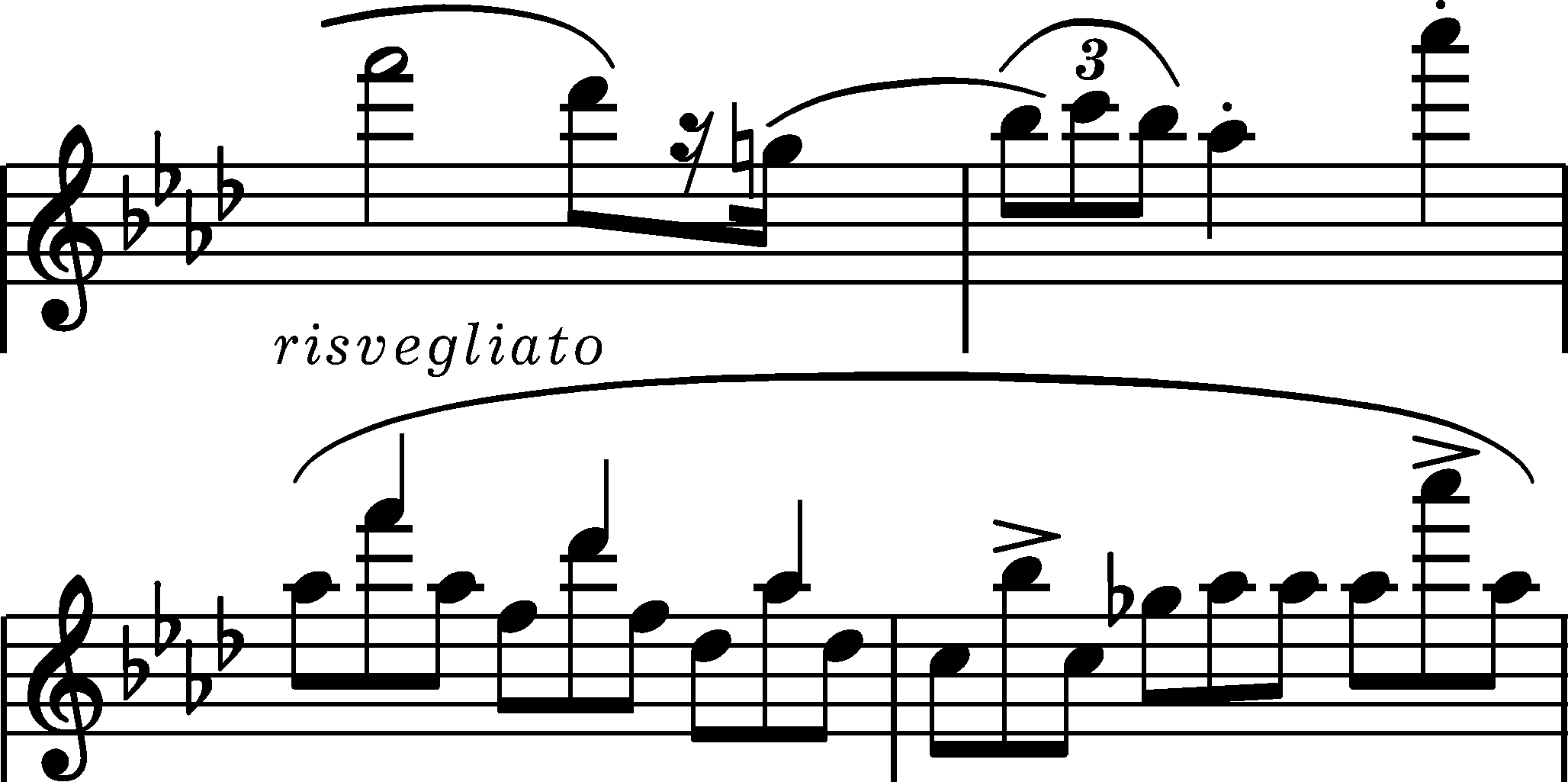



The notes separated with additional crotchet stems in bars 261 and 263 and the accented and repeated notes in bars 262 and 264 constitute a variant of the last phrase of the second theme of this movement (bars 169-172)* marked in the same way (risvegliato). The scheme is then repeated in all analogous bars. In the example presented below, we compare bars 169-170, transposed to D major, with bars 277-279:
major, with bars 277-279:

Therefore, there is no doubt that all these stems and accents must be preserved in the notation, hence both omissions and shifts of accents are mistakes.
- omission of the 1st accent in bar 264 in GE1 (→FE→EE);
- shifting the remaining three accents a quaver before in EE, to the 1st or 7th quavers of the bar. It probably originated in a very inaccurate placement of the signs in FE.
- the 2nd accent in bar 272 was overlooked in GE1 (→FE);
- in FE1 the accent in bar 272 was placed so inaccurately that it seems to apply to the 3rd quaver;
- in EE the 2nd accent in bar 270 was moved to the 7th quaver and an analogous accent was added in bar 272. In addition, the first accents in both bars were changed to vertical ones.
- the 2nd accent in bar 280 was overlooked in GE1;
- FE (→EE) added the accent overlooked in GE1;
- in EE only the 1st accent in bar 280 is over the correct note, the remaining ones were moved by a quaver, under the 1st and 7th notes. It could have originated in an inaccurate placement of the signs in FE.
* The last phrase actually reveals a significant relationship with the first phrase (bars 145-146), used in the discussed fragment in the part of the L.H.
Compare the passage in the sources »
category imprint: Differences between sources
issues: Inaccuracies in FE, Errors in GE, EE inaccuracies
notation: Articulation, Accents, Hairpins





